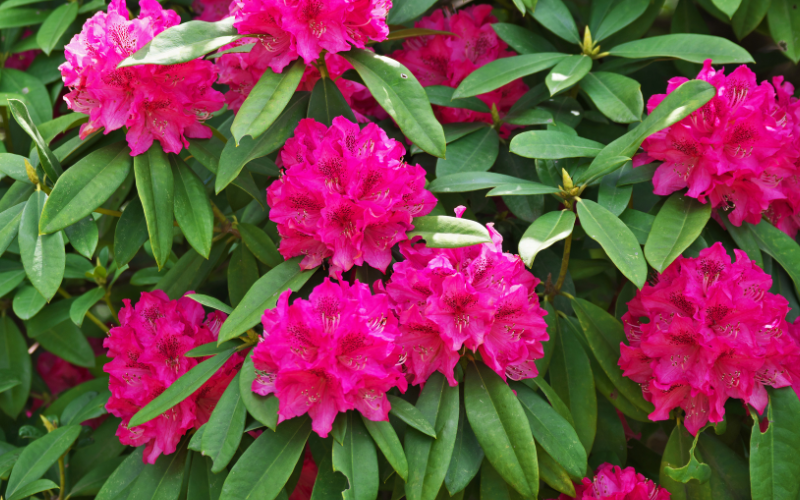Gardening for Wildlife: Three Native Evergreen Shrubs
Written by Claire Waltman
This little group of native shrubs includes two evergreen shrubs that vie for being my all-time favorite native plant. Evergreen huckleberry and Cascade or long-leaved Oregon grape are both stalwarts in my garden. They behave themselves, are carefree, and provide year-round structure to the garden. If you’re a rule-follower using the guideline for planning a garden with 1/3 evergreen, 1/3 deciduous, and 1/3 perennial plants, these 2 shrubs are excellent choices. Both are readily available at most retail nurseries.
Evergreen Huckleberry (Vaccinium ovatum)
Evergreen huckleberry (Vaccinium ovatum) grows moderately fast into a slightly irregularly shaped, 3-6 ft shrub. It prefers sun to part shade and moist, well-drained soil. The 1 ¼” glossy leaves form very dense cover for the birds year-round and the berries provide food in summer. It does occasionally send out a gangly stem or two that can be snipped ff to maintain a very tidy shape if you prefer. I suppose one could shear it, but I’m not a plant-torturer so I wouldn’t know. The berries are edible and look like small blueberries. In my opinion they are best eaten straight off the bush while puttering in the garden because they are small and a little tedious to clean. Once a year though I do indulge in huckleberry pancakes served with huckleberry syrup. Specimens can be seen up close at the Bellevue Botanical Garden along the path in the Nature Discovery Garden.
Cascade Oregon grape (Mahonia nervosa)
Cascade Oregon grape (Mahonia nervosa), a very common understory plant in our local forest, is a year-round delight in the garden. It prefers moist to dry soil in some shade and grows moderately fast into a graceful mounding 2-ft shrub. This little garden star can be tucked neatly into beds or under trees. The leaves are dark green in spring and summer turning to a subtle purple red in the fall and winter. The yellow flowers are held above the foliage in spring to early summer. The gracefully arching stems provide excellent hiding places for Dark-Eyed Juncos. This may be a shrub I have over-planted even though good garden design does dictate some repetition. I have 10-12 scattered about, mostly closely planted in groups of 3. I’ve also let it grow wild along with sword fern in small section of my back garden where is has spread slowly by rhizomes. These can also be seen at the Bellevue Botanical Garden throughout the natural area leading to the Ravine Experience Bridge where groups of mahonia can be best appreciated. Remember that plants growing in the wild must compete for resources and will look a little straggly compared those grown in cultivation.
Note: There are two Mahonia that I don’t personally recommend. Tall Oregon grape (Mahonia aquifolium) can grow up to 10 ft in height with shiny green leaves that are a little too prickly for my tastes. However, if you need to discourage foot traffic, this could be an excellent choice unless you want to go all out with devil’s club (Oplopanax horridus). Low Oregon grape (Mahonia repens) is an absolutely beautiful 1-ft evergreen shrub with glorious fall color, but you have to like it a lot because it reseeds avidly so you will have many, many more to like over time.
Pacific rhododendron (Rhododendron macrophyllum)
Image courtesy of Canva Images
Pacific rhododendron (Rhododendron macrophyllum), the state flower of Washington, isn’t as flashy as many of the named hybrids and has a somewhat lanky growth habit. Still, the pink to purple trusses certainly brighten the woodland garden. Provide it with some shade and moist to dry soil. Although it can be quite large, to 25 ft in the forest, it is typically much smaller with a little sunlight. Mine is roughly 5 feet tall at 10 years. In additional to the more manageable size, it will also produce more flowers with some sun.








